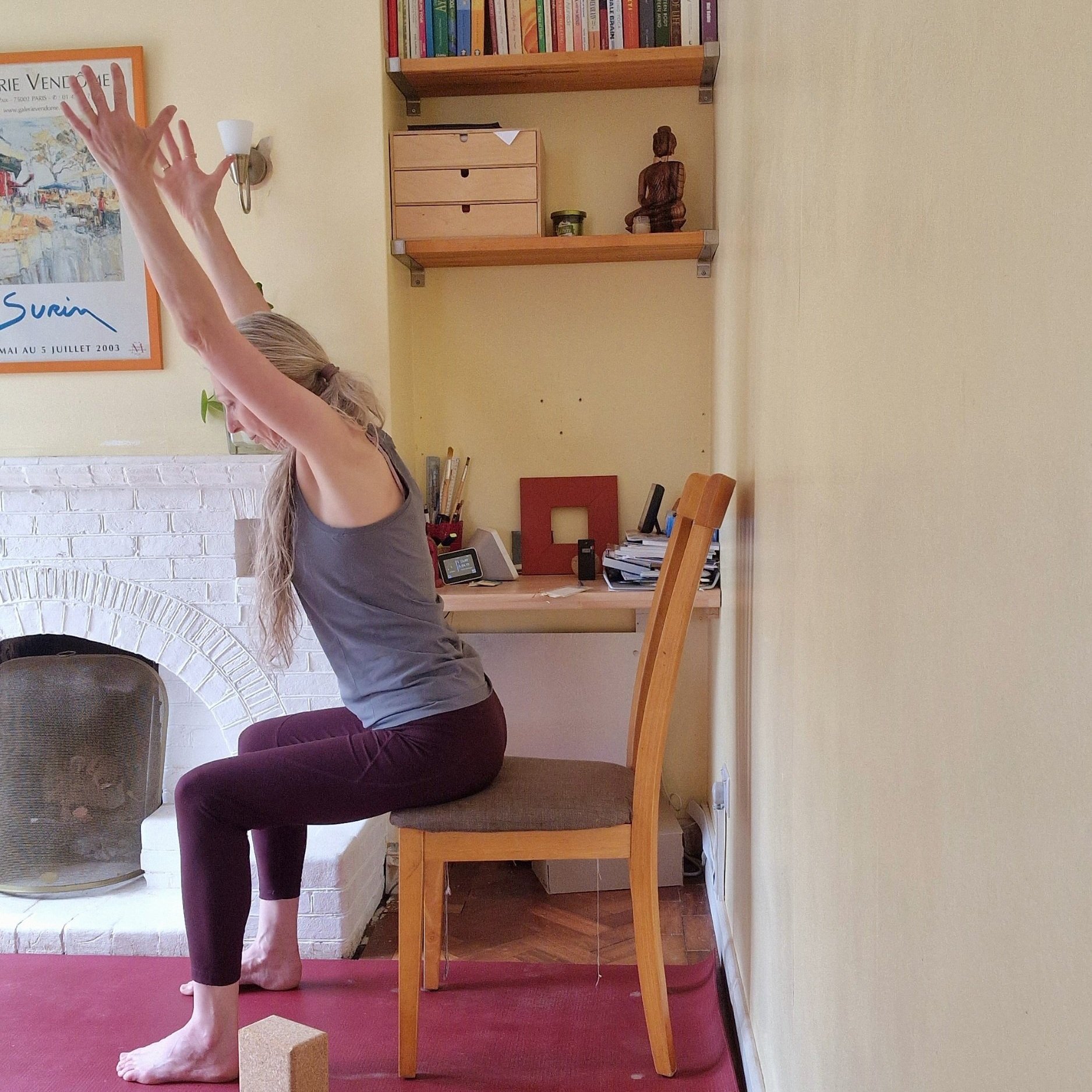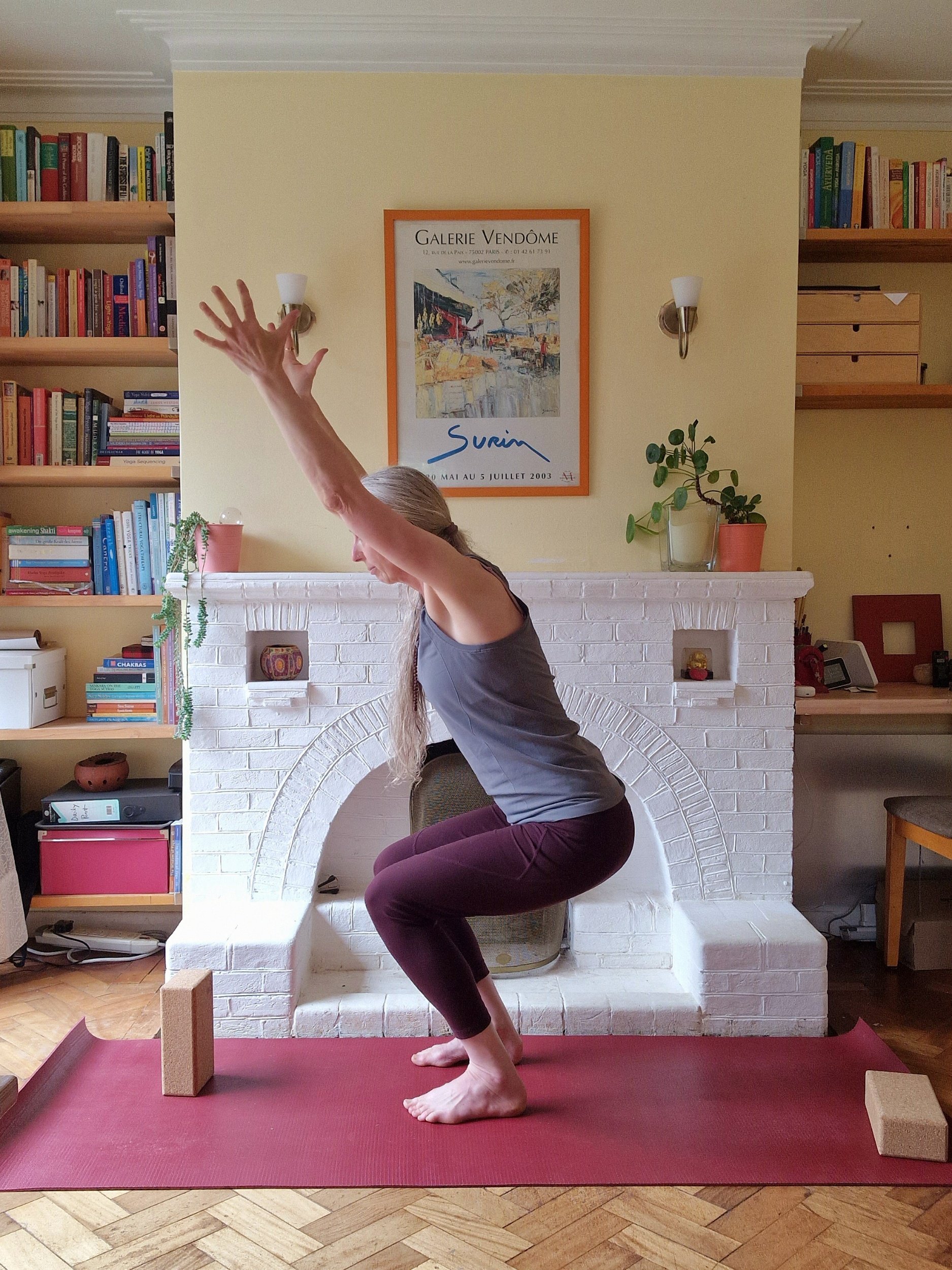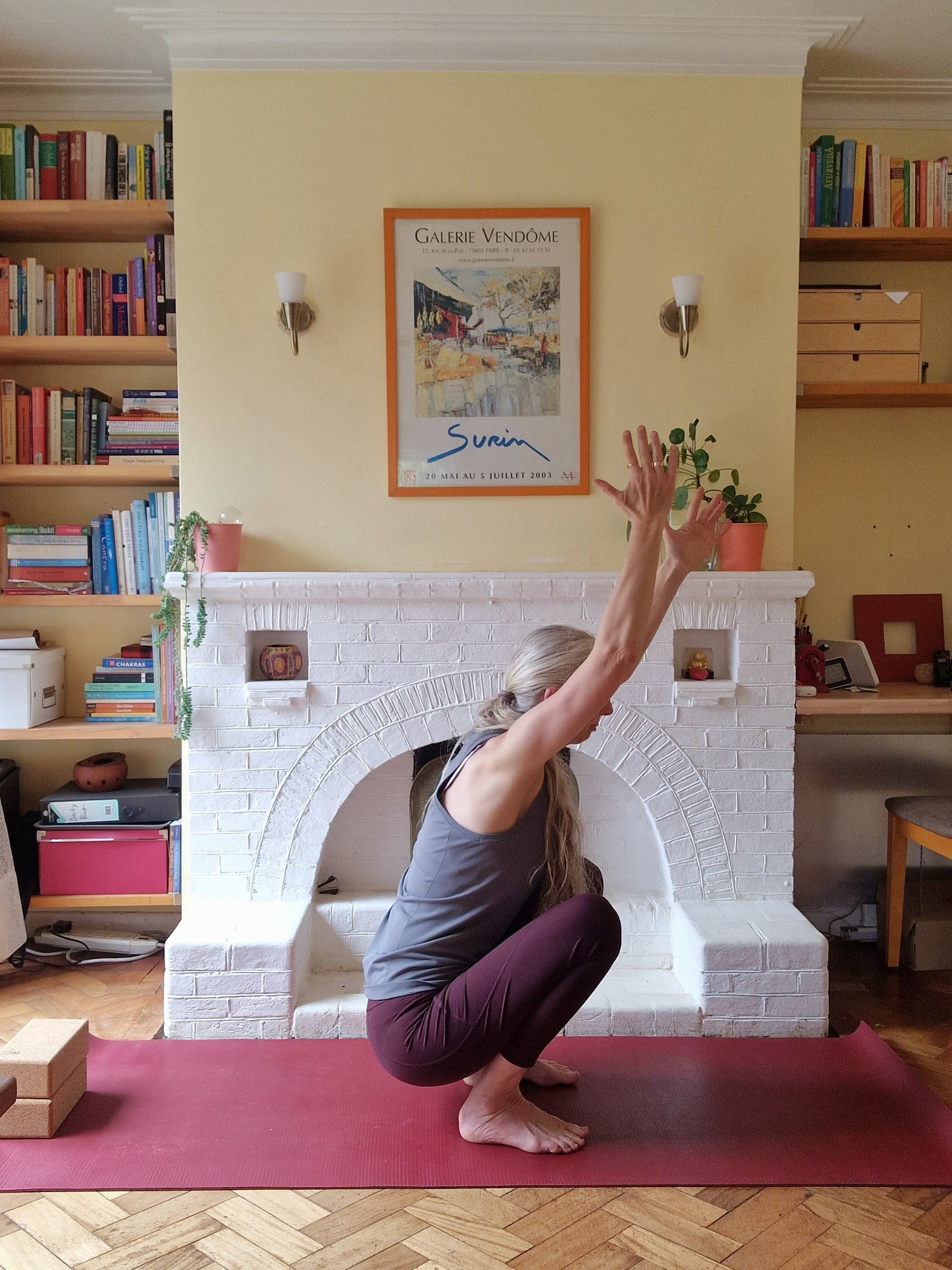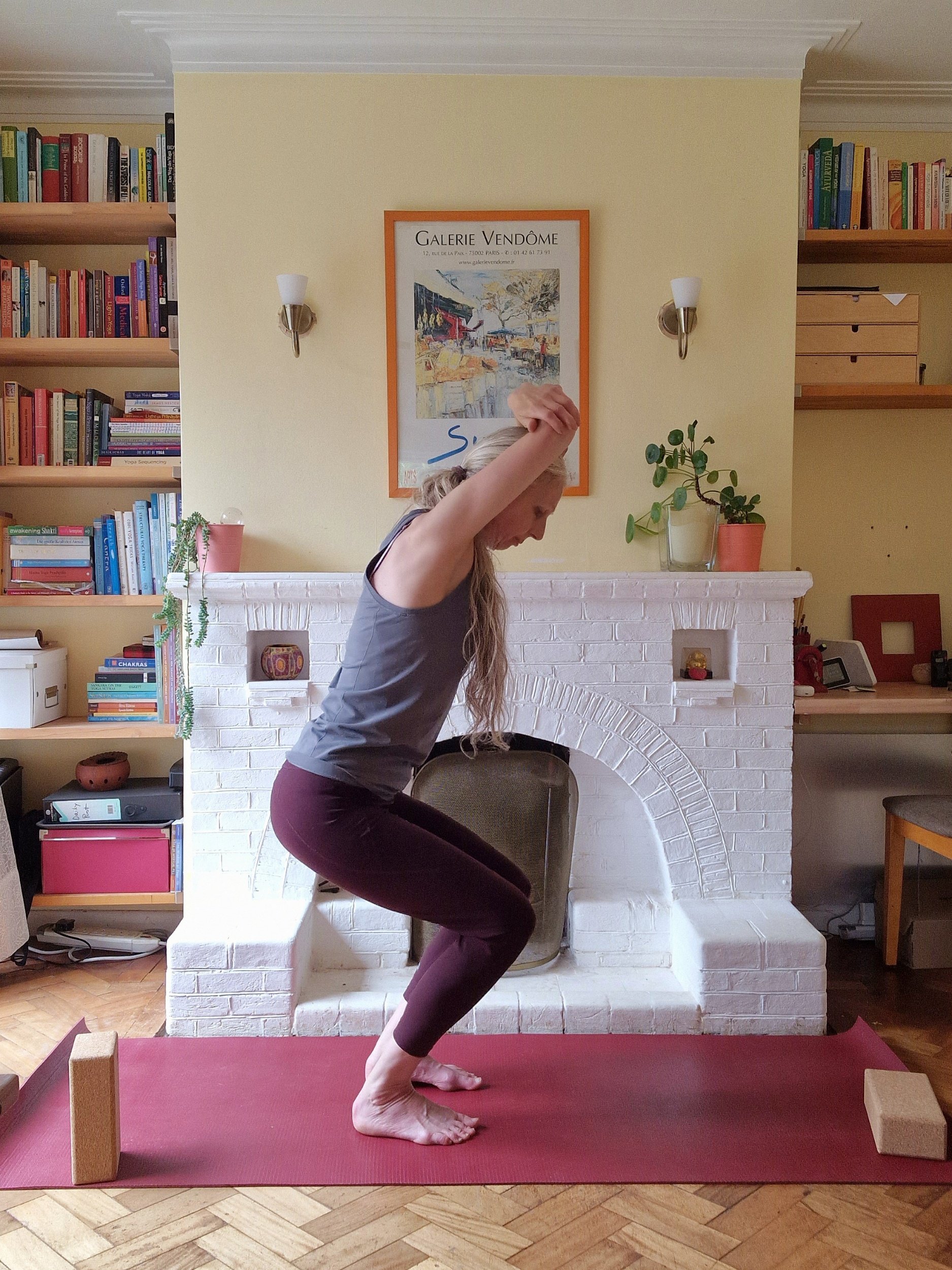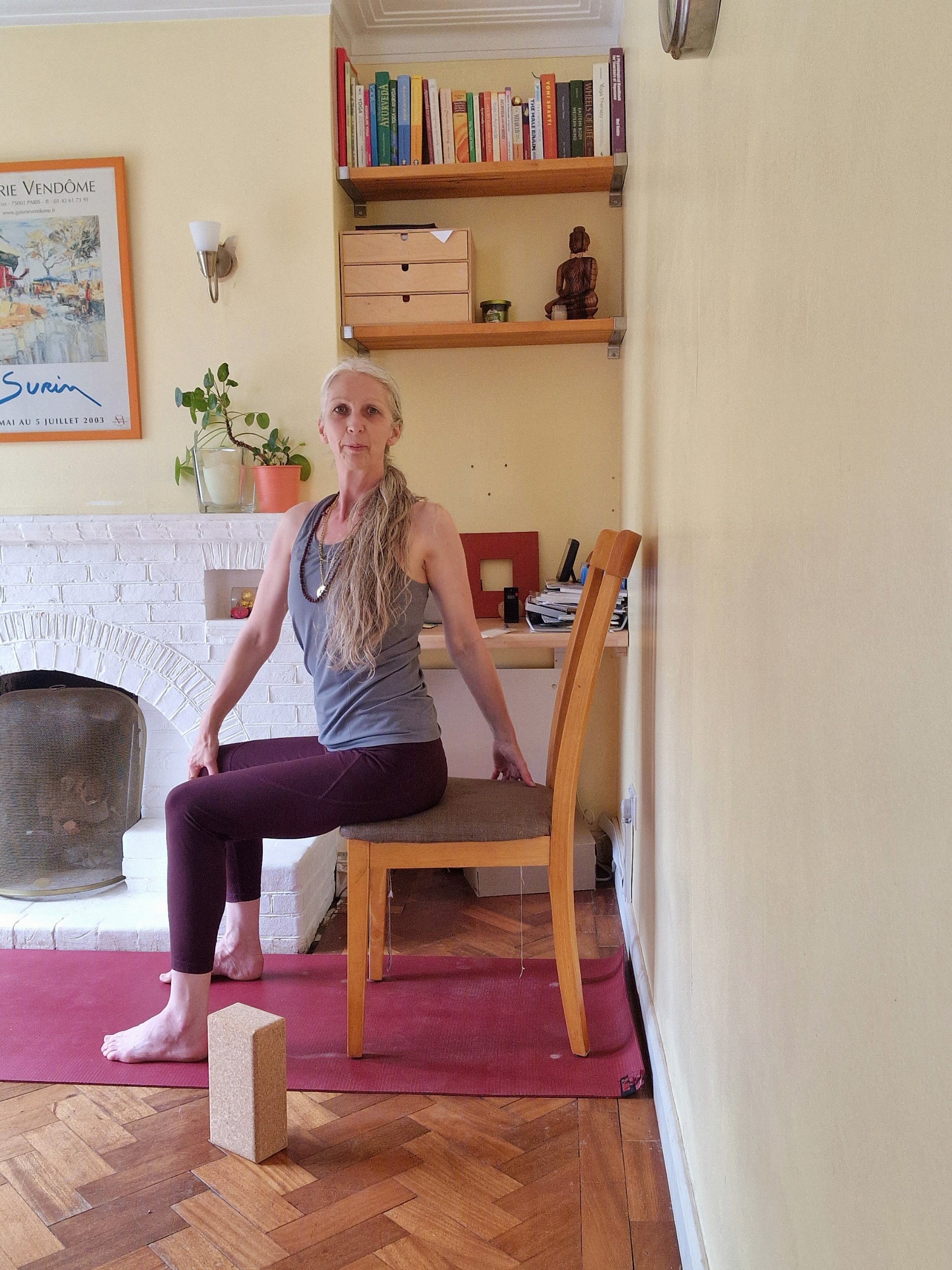Utkatasana – Improve Focus and Stamina with Chair Pose
Utkatasana
Imagine this: during my yoga sessions, when I mention the 'chair pose,' a collective sigh of disappointment fills the room. It's no secret that Utkatasana, with its intense demands on our strength, stamina, and mental fortitude, can seem daunting. But that's precisely what makes it so rewarding.
The Story behind the Chair Pose
Let’s delve into the origins of Utkatasana, and you'll uncover two captivating stories steeped in ancient mythology.
They draw from the Ramayana, a timeless tale of Ayodhya's exiled King Rama; we find those powerful narratives intertwined with the chair pose.
A time long ago when chairs were reserved for royalty so the common people could see them better during any kind of interaction.
Rama, the rightful heir to the throne, faced an unexpected twist on the eve of his coronation. His second mother, invoking a favour from her husband, Rama’s father, pleaded for her son Bharat to ascend the throne instead. Despite being more suited for kingship, Rama gracefully accepted his exile for a gruelling fourteen years.
Bharat was distraught as he loved and respected Rama deeply. He wouldn’t accept the throne but rather accepted a role as a placeholder until Rama’s return. Bharat refused to sit on the throne and symbolically left his mark by placing Rama’s sandals atop the empty throne. This tale resonates with the experience of shouldering responsibilities that aren't our own, facing uncertainty and discomfort, yet giving our utmost best.
The second story involves Hanuman, an unwavering devotee of Rama and Sita, his wife. Hanuman possessed incredible abilities, including the power of flight. Rama entrusted him with the task of finding Sita, who had been kidnapped by the demon king Ravana. When confronted by Ravana's ostentatious throne, Hanuman fearlessly outshone the demon king. Expanding his tail with his superpowers, he created a seat larger and more magnificent than Ravana's throne. Rama's unwavering faith in Hanuman infused him with strength and confidence.
In Utkatasana, we can tap into both energies: the determination that arises when entrusted with a task beyond our perceived capabilities and the self-assurance that blossoms from the trust others place in us.
Be Inspired. Sign up.
Subscribe to our weekly Sunday Read newsletter & this Seasonal Ayurveda & Yoga Lifestyle Blog.
How to practise Utkatasana?
Here is an instruction for the final pose:
From Tadasana of Samastithi
IN lengthen through the torso
EX sit down on an imaginary chair
The upper body needs to bend slightly forward
Weigh and ground through the heels and the sit bones
IN lift the arms overhead, palms facing each other.
Keep breathing deeply down to your belly
Keep lengthening through the spine, through the crown of your head
To exit the pose with an IN, press the floor away with your feet to straighten your legs.
EX lower the arms back to alongside the body.
Here are 6 Benefits of Utkatasana!
We established that the pose is tricky and, at least, when practising at home, we need a little encouragement as to why we are going to do this. So here are some incredible benefits that might entice us to integrate the pose into our practice:
Strengthens our legs and ankles and helps to develop the leg muscles evenly.
Strengthens the back and, according to Pathabi Jois’ Yoga Mala, prevents pain associated with the vertebral column.
Strengthens the waist and core as we squeeze the legs in.
According to Iyengar, it removes shoulders stiffness and improves their mobility.
Increases the strength of the waist, which becomes slender, and the body gets light.
Enhances focus, stamina and determination.
Ways to make Utkatasana more accessible.
There is no doubt this pose challenges us in different ways. So here are some starting points and practices to make it easier to navigate the pose.
Use the wall!
Stand with your back against the wall, sit down, walk your feet forward keep your back against the wall. This will prepare your legs for the hold.
Once comfortable, bring your sit bones against the wall and lean the upper body slightly forward while keeping your spine long. The sit bones anchor in the wall as the crown of the head reaches forward and up. Keep your hands on your thighs but try to lift one arm at a time to head level and see how your shoulders get on with it.
Sit on a chair 😊
Sit on an actual chair, mid-seat, feet firm on the floor and lean forward. Proceed as above.
Use Props
Put a block between your thighs and squeeze the block to strengthen the legs.
Place blocks underneath the heels if the calves feel too tight.
Change the Arm Position
If taking the arms overhead is too strong, lift them to shoulder level in front of you.
Try cactus arms to the side.
Need a challenge?
There are a few ways how you can challenge yourself if you feel already very comfortable in Utkatasana. You can try the following:
Go lower, bend your knees further, and ensure your knees feel good without pressure.
Add a twist to the pose.
Hold opposite elbows; this is stronger on the shoulders.
Adapt Utkatasana to the Seasons
This is definitely an excellent pose to practise during autumn, winter and spring. It offers grounding to the body and focus to the mind. Holding the pose creates warmth in the body, which benefits both doshas as they have cold qualities that need to be balanced.
Hold shorter during the autumn and winter; 3 deep, slow breaths should be sufficient during the Vata dominant time.
During the Kapha dominant springtime, you can hold longer; 5 breath long breaths would be a good time frame.
In the summer, practice only with a short hold due to the heat the pose creates; the shoulders and back will benefit from the tension-releasing effects.
Always remember Vata and Pitta are tired quickly; therefore, refrain from exhausting yourself with your practice.
Final Thoughts
Always enjoy your practice, practise step by step, be patient and wait until your body is ready for the next step. Then, enjoy the beautiful benefits of this pose.
Let me know if you find these tips helpful. You can leave a message on Instagram, Facebook or even good old email.
I love hearing from you!
Katja x
P.S. If you like to learn more about season living with Yoga & Ayurveda, check out our YogaVeda Summer Mini-Retreat Sunday, June 11th.


